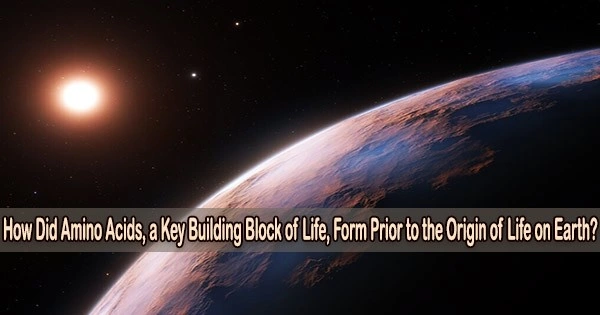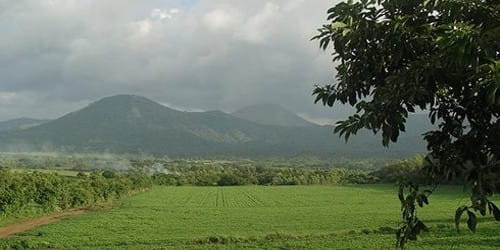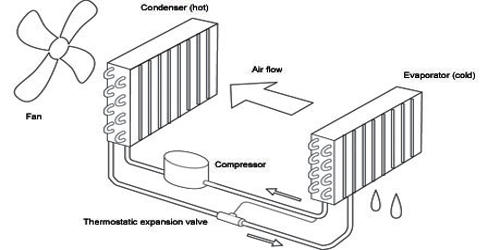Our solar system evolved from a molecular cloud made of gas and dust released into the interstellar medium (ISM), a huge area between stars. The early sun was produced as the molecular cloud collapsed, with a wide disk of gas and dust surrounding it. The dusty material smashed to form stony material, which grew in size to become huge entities known as planetesimals.
The planetesimals that formed far enough from the sun, also contained large quantities of ice. Water and other volatile molecules like as carbon monoxide (CO), carbon dioxide (CO2), methanol (CH3OH), and ammonia (NH3) were found in the ice, as well as many other organic compounds, possibly including some amino acids.
The ice eventually melted due to the presence of radioactive substances, which heated up the bodies. This period of liquid water (termed aqueous alteration) enabled many reactions to occur, including Strecker synthesis and Formose-like reactions, the result being the production of new organic material, including amino acids. The same process transformed rocky materials into new secondary minerals such as phyllosilicates, carbonates, Fe-oxides, and Fe-sulfides.
The planetesimals began to freeze after several millions of years as the radioactive material was depleted. Later encounters and interactions with the planets of the solar system broke up the massive bodies, sending asteroidal and cometary debris close to Earth.
Further impact events have delivered fragments of these asteroids and comets to the Earth’s surface since then, supplying the Earth with large amounts of organic material, including amino acids, over the course of its history.
Amino acids are within all living things on Earth, being the building blocks of proteins. Proteins are essential for many processes within living organisms, including catalysing reactions (enzymes), replicating genetic material (ribosomes), transporting molecules (transport proteins) and providing a structure to cells and organisms (e.g. collagen).
As a result, amino acids would have been required in substantial quantities in the location where life began on Earth.
Previous research has suggested a variety of probable amino acid formation conditions on the Early Earth and in extraterrestrial habitats. Surprisingly, most amino acids exist in at least two forms, with structures that are mirror reflections of one another, akin to human hands.
Accordingly, these are often referred to as the right-handed or left-handed optical isomers. The left-handed optical isomer of amino acids is used in the proteins of life on Earth, which is an intriguing feature.
Only a specific class of meteorites (carbonaceous chondrites) are known to contain excesses of left-handed optical isomers, leading to speculation that the amino acids used by life originated from these meteorites. Despite this, the amino acids in meteorites could have formed before or after their incorporation into the meteorites.
A group of scientists examined different bits of the asteroid Ryugu and calculated the amount of amino acids in them. The quantity of mineral phases within the particles had already been published in another work, allowing for a comparison of amino acid and mineral abundance. It was found that one particle (A0022) contained a high abundance of an amino acid that is uncommon in extraterrestrial materials, called dimethylglycine (DMG), whereas the other particle (C0008) did not contain this amino acid above detection limit.
Meanwhile, the abundance of the amino acid glycine was found to be lower in A0022 compared to C0008, while the abundance of β-Alanine showed the opposite trend. Accordingly, the ratio of β-Alanine to glycine was higher for A0022 than for C0008. This ratio was shown previously to be indicative of the extent of aqueous alteration operating on planetesimals.
As a result, it was proposed that a process associated to higher levels of aqueous alteration in A0022 could explain the particle’s high abundance of DMG in comparison to C0008.
As a result, the mineral phases were analyzed to determine if there was any additional evidence for what reaction was driving the various amino acid abundances among the Ryugu particles. It was found that the abundance of secondary minerals (formed after aqueous alteration), including carbonate, magnetite and Fe-sulfides, was higher in A0022 than in C0008.
The significant concentration of carbonate, in instance, suggested that there was more CO or CO2 in the region of the planetesimal where A0022 had been changed than in C0008.
In conjunction with the evidence for more intense aqueous alteration from the β-Alanine to glycine ratio, this indicated that more ice in general may have been present in the precursor of A0022 than in C0008.
The Eschweiler-Clarke reaction is one method for economically producing DMG, an essential nutrient for humans. This reaction necessitates the interaction of glycine in water with formic acid and formaldehyde, as well as the production of CO2. Glycine, formaldehyde, and formic acid are all prevalent in comets and are therefore expected to be present in asteroids’ planetesimal predecessors.
As a result, if the Eschweiler-Clarke reaction took place during aqueous alteration within the precursor of A0022, it could explain the high amount of DMG and reduced abundance of glycine in this particle compared to C0008. Additionally, the CO2 produced could have further contributed to the formation of carbonates in A0022.
Overall, the study’s findings show that even little variations in the conditions present during aqueous alteration on planetesimals can have a significant impact on the end abundances of amino acids. Some amino acids can be destroyed while others are created, affecting the availability of amino acids at the start of life on Earth.
















